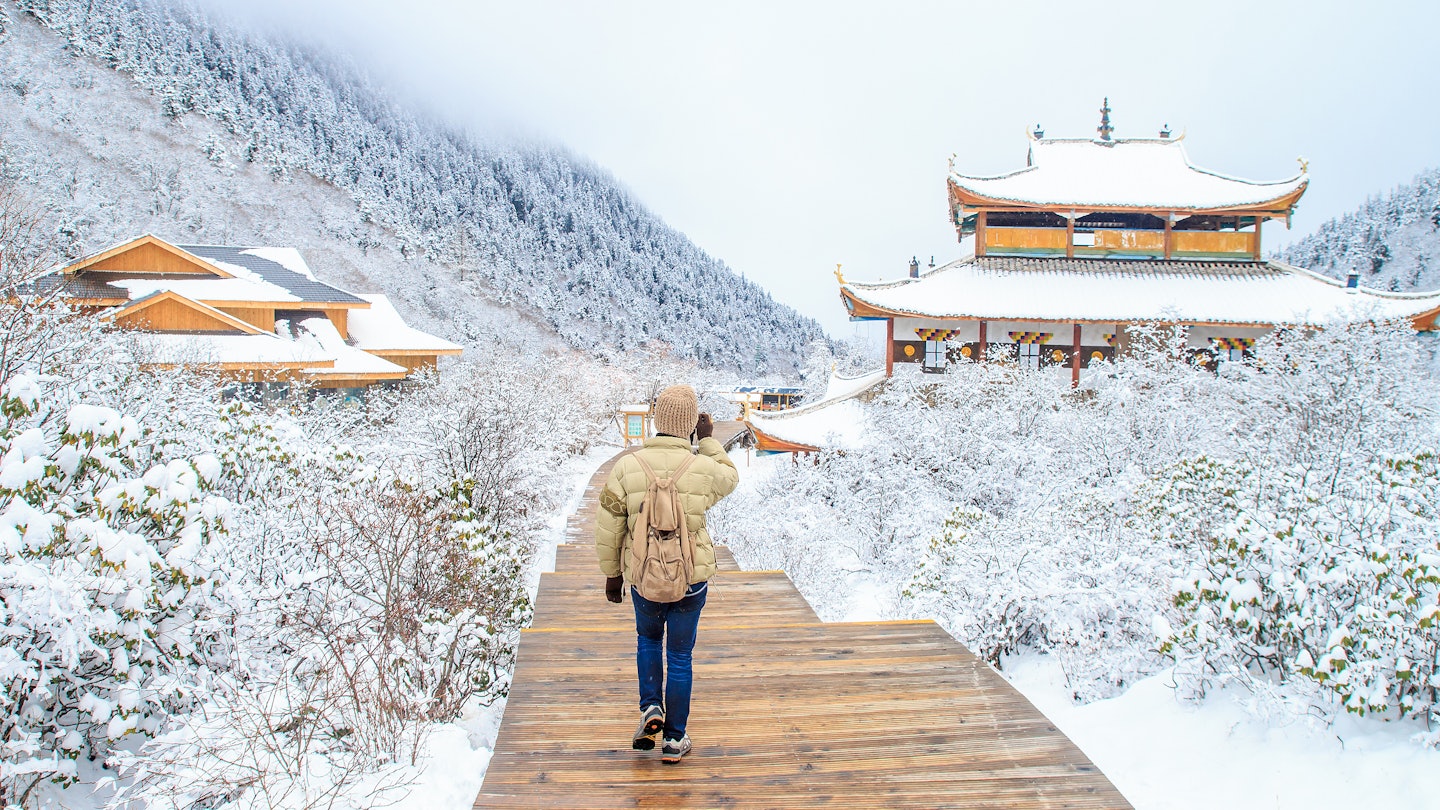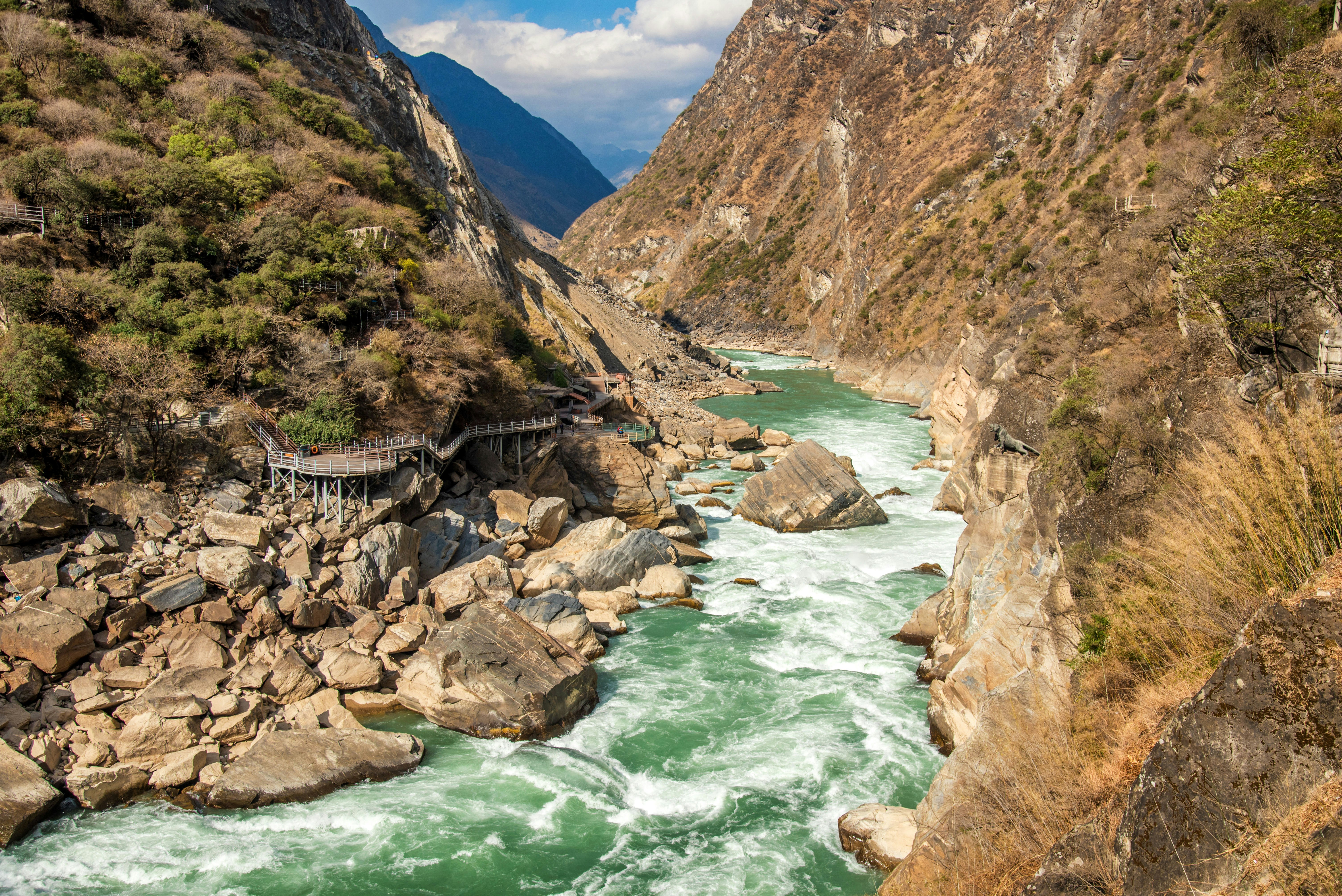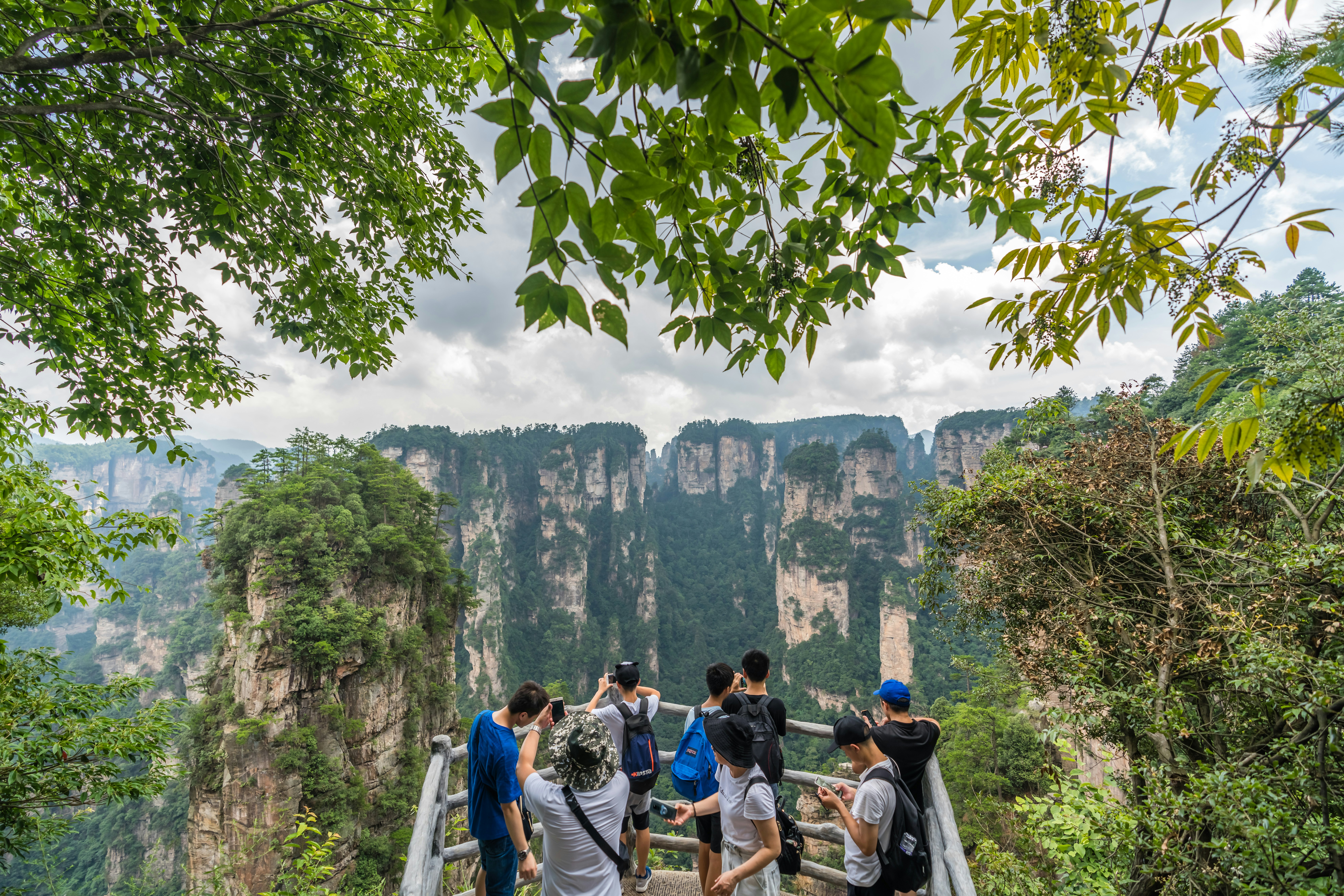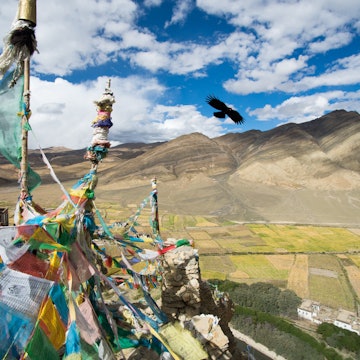

Trekking in China is all about iconic landscapes © Shutterstock / Phraisohn Siripool
Immortalized in inky brushstrokes for millennia, China’s mist-swathed landscapes offer some of the most evocative and spectacular hiking scenery anywhere in the world.
Whether you’re following in the footsteps of Confucius on the slopes of Mount Tai, marching between watchtowers on the Great Wall, or battling vertigo among the gravity-defying spires of Zhangjiajie, you’ll find jaw-dropping vistas at every turn.
What you won’t find so readily is meditative serenity. Hiking is booming in the world’s most populous nation, and some of the most famous trails have actually been pilgrimage sites for centuries. On many routes, you'll find heavy crowds and paved paths, steps and handrails running most of the way. But fear not; it only takes a bit of tactical planning to sidestep the crowds and carve out a slice of majestic scenery all for yourself.
Here are the best places to start walking.
Tai Shan, Shandong Province
Best hike through history
5.5 miles (8.9km), 5–7 hours, strenuous (unless you take the cable car)
A treasure trove of Chinese culture, Tai Shan is China’s most sacred peak for devotees of Taoism. The magnificent Dai Temple at the base of the mountain is the traditional starting point for pilgrims – don’t miss the enormous Song dynasty mural depicting emperor Zhenzong as the god of Tai Shan making the sacred ascent. Now steel yourself: from the temple’s north gate, it’s a steady march up 6600 steps to the top.
The trek – also known as the Central Route – passes Buddhist and Taoist temples, cliff-face calligraphy and ancient legends at every turn. There’s so much to discover along the way that you might even forget how much your legs ache. The final, most spectacular stretch takes you through the painted South Gate to Heaven and on to the summit area. There are guest houses here if you want to stay and catch the sunrise, but cable cars and a shuttle bus back to the valley floor mean you can comfortably make it up and down in a day.
Hua Shan, Shaanxi Province
Best hike for extreme thrills
3.7 miles (6km), 4–8 hours, strenuous
The sacred mountain of Hua Shan in Shaanxi, a famous destination for Taoist pilgrims, has thousands of steps, five granite peaks, transcendent views, and, if you’re in the mood for it, several gravity-defying diversions. The so-called Soldier’s Path climbs almost vertically up the mountain on shallow rock-cut steps, with only a metal chain to hold on to.
Even more thrilling is the Plank Walk, a path of rickety wooden boards, just inches wide, hugging a cliff face above a chasm dropping 2000m (6562ft). It’s said the route was first built in the Yuan dynasty by a Taoist hermit seeking self-cultivation. Thankfully, modern-day pilgrims get a safety harness and carabiners for the via ferrata-style ascent.

Gubeikou Great Wall, Beijing
Best hike for Game of Thrones-style ruins
9 miles (15km), 5–6 hours, moderate
Only a few stretches of the Great Wall around Beijing have been restored for tourists; the rest is wild, crumbling and remote, presenting thrilling hiking opportunities for the adventurous wanderer. The town of Gubeikou, once a heavily guarded pass into Beijing, sees the wall soaring off in opposite directions.
The section climbing Crouching Tiger Mountain takes off like a rollercoaster with incredible views of other sections of wall racing away on distant crags. On the other side, Coiled Dragon Mountain offers a gentler climb between dozens of partially collapsed watchtowers, passing through rugged scenery all the way to Jinshanling, a recently restored section of the fortification.
Note that public access to the wild sections of the Great Wall isn’t guaranteed, so it’s advisable to go with a reputable company such as Beijing Hikers – they can share the latest intel on which sections are open to trekkers.
Huangshan, Anhui Province
Best hike to find your artistic muse
6–15 miles, 10–25km, moderate
Knotted by shapely pine trees, the mist-swathed peaks of Yellow Mountain (Huangshan), have long been a muse for China’s most esteemed painters and poets. For your own dose of inspiration, trek the scenic Eastern Steps up to the summit area – a 7.5km (4.6 miles) trip one-way – where you can stay overnight, recuperate and catch the sunrise at the evocatively-named Beginning to Believe Peak.
Afterward, strike out on trails that lead to fancifully named views like "Flower Blooming on a Brush Tip," named for a paintbrush-shaped granite formation towering 1630m (5348ft), with a lone pine tree sprouting out of the top. If the tour group scrums get too much, exit stage left by hiking the less-visited West Sea Canyon, a 4-hour loop covering 8.5km (5.3 miles) of hair-raising dips and ascents.

Tiger Leaping Gorge, Yunnan Province
Best hike in southwest China
15.7 miles (25km), 2 days (10–15 hours), moderate
A perennial favorite for backpackers, this famous route follows switchback donkey trails that skirt one of the world’s deepest gorges, rising almost 4000m (13,123ft) from the frothing waters of the Jinsha River up to the snow-capped peaks of the Haba massif and Jade Dragon Snow Mountains.
It’s a spectacular trek and best tackled over at least two days; lively guesthouses with gorgeous views and fridges amply stocked with beer line the trail. A dramatically steep detour down to the Middle Rapids is where you’ll find the Tiger Leaping Stone, the spot where, as legend tells it, a tiger jumped across the river – all 25m (82ft) of it – giving the gorge its name.
Longji Rice Terraces, Guangxi Province
Best hike to experience rural China
7.4 miles (12km), 4 hours, easy
This village-to-village trek cuts a dreamy swathe through the miraculous rice terraces between Ping’an and Dazhai, known as the "Dragon’s Backbone" because of their resemblance to overlapping scales. As you traverse narrow paved paths and raised causeways, you’ll have countless chances to photograph the swirling cascades of paddy fields draped over the surrounding mountains – weather permitting, of course.
Best of all, you’ll be far more likely to bump into local Zhuang or Yao rice farmers rather than other tourists. Engineered by hand over generations by farming families from the two villages, the spectacular rice terraces are at their best in May and June when the first vivid green rice shoots appear above the irrigated paddies.

Zhangjiajie National Forest Park, Hunan Province
Best hike for otherworldly vibes
7 miles (11km), 4–6 hours, easy to moderate
This mind-blowing landscape of soaring rock pinnacles choked in subtropical vegetation is so otherworldly it provided the inspiration for Pandora, the alien world depicted in James Cameron’s hit movie Avatar.
The most famous trail at Zhangjiajie is the 90-minute path through the heights of Yuanjiajie, accessed via the world’s highest outdoor elevator (built into a sheer cliff face). Tour groups jostle for space to photograph the Southern Sky Column, a vertical pinnacle over a kilometer tall, before crossing a vertigo-inducing, natural rock bridge between twin spires 357m (1171ft) above the canyon floor.
Once you’ve battled through the crowds, you can descend to the relative serenity of the Golden Whip Stream, following a 6km (3.7-mile) trail cutting along the lush canyon floor, as rock towers, giant trees and wild macaques cavort overhead.
Ganden to Samye, Tibet Autonomous Prefecture
Best hike for serious trekkers
50 miles (80km), 4–5 days, strenuous
You’ll need all the appropriate permits, guides and pack animals to take on this trek between Ganden Monastery, founded in 1409, and the busy Buddhist town of Samye, with its own historic monastery dripping with murals and statues. Entry rules for Tibet are complicated and you'll need to make all arrangements with a licensed tour operator.
The route, within easy reach of the capital, Lhasa, crosses two passes above 5000m (16,400ft), taking in serene alpine landscapes, glacial lakes, yak herding camps and sacred sights. The undisputed highlight is exploring the two monasteries, both hugely significant sites for Tibetan Buddhists.
You may also like:
Incredible places in China to challenge your preconceptions
How do I get a visa for China?
The best time of year to visit China














